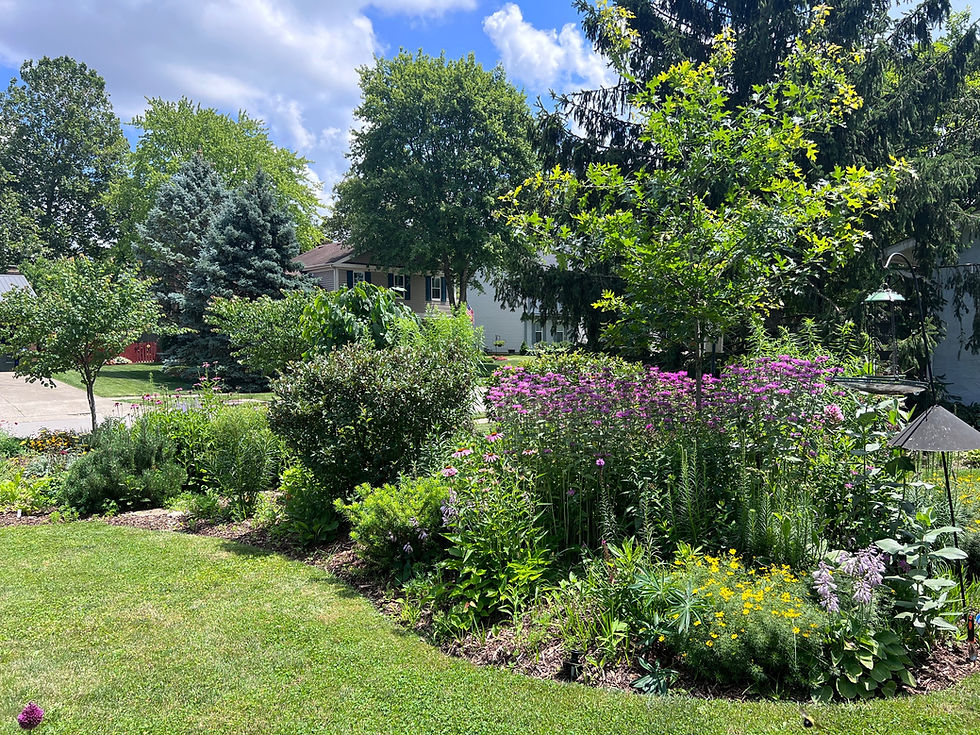Beyond Basic Landscaping
- Cathy Tiffany

- Apr 8, 2024
- 2 min read

In many (most) suburban neighborhoods, the typical landscaping is boxwoods, yews and barberry bushes. While at first glance understandably these bushes offer a low-maintenance design, they are also low function.
Most people don't consider the role that the plants we choose have in nature. And hey, I get it - we're all busy! But, as more and more fields and forests are converted to corporate centers, condos, apartments and housing complexes, the more need we have to bring nature back into our living spaces.
Ever wonder why you don't see many colorful birds, lightning bugs or butterflies? It's because the suburbs offer nothing for them. Nature -and in this case I'm talking about birds, bees and butterflies - has requirements and actually, they aren't even that specific. What they do need is food to eat and a place to raise their young.
When you consider your landscaping, I totally understand when someone wants low maintenance. Maybe you don't have a green thumb, maybe you have severe allergies, you abhor gardening or just have no idea what you're doing or where to start. I want to keep this simple: there are a bunch of native plants that can enhance your landscape, are low maintenance, practically foolproof and come back every year (perennial).
Boxwoods are fine, they aren't hurting anything. Hostas are groovy when you need to fill a space and don't know what else to plant. Barberries, on the other hand, are actually invasive and should be avoided. Invasive means that they take over an area and crowd out the native plants of the area. So, swapping your barberries out for something useful and native would be awesome. Get some ideas HERE.
The whole goal here is to provide not only a good selection of a tree or two (an oak tree hosts over 500 species of moths and butterflies!) and some useful bushes, but to add in a few pollen and nectar producing native perennial or annual flowers. You'll then have yourself a piece of property that's doing its part for nature and will put a smile on your face when you come home!
Here's the skinny on why I wrote this article:
Many typical suburban landscapes don't provide birds with seeds or berries, no native plants from which to get caterpillars (see how HERE) - you won't believe why this is so important!
Not all flowers produce good quality pollen and nectar for bees and butterflies, so planting native plants is the best way to go.
These changes can be overwhelming: start with one corner or area of your yard to make a change and build from there as you're more comfortable.
If you love butterflies, nectar producing native flowers are vital and so are host plants, which you can find out about HERE and HERE.
Coming home to a yard filled with native plants is practically guaranteed to put a smile on your face!









Comments